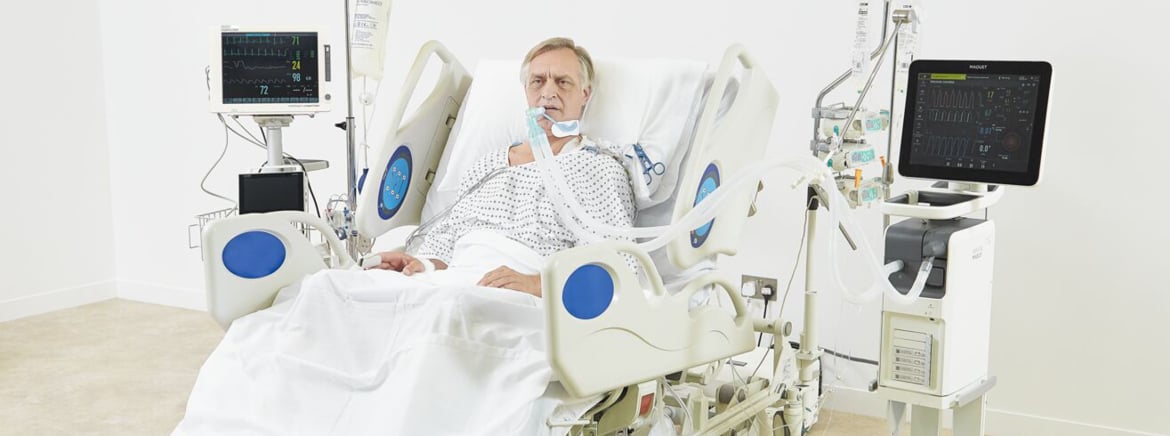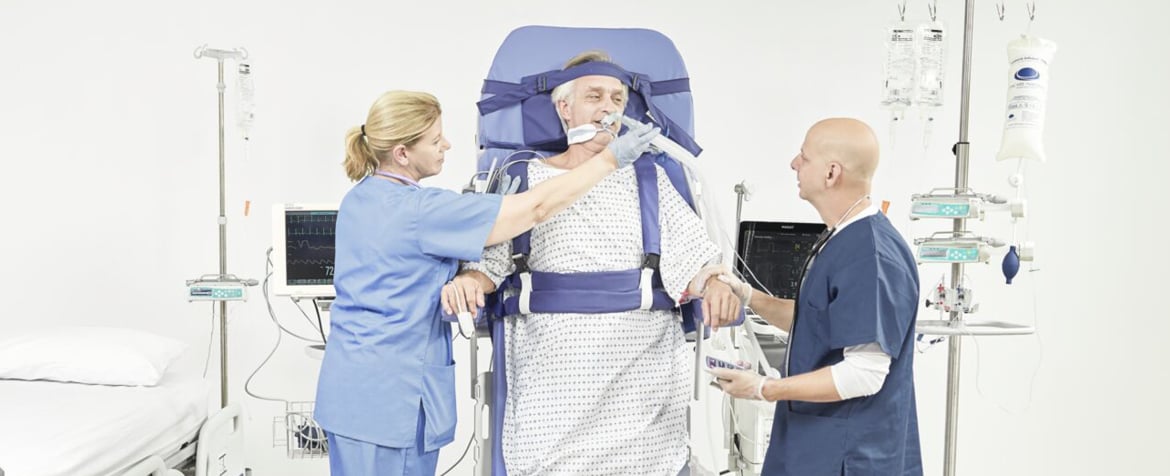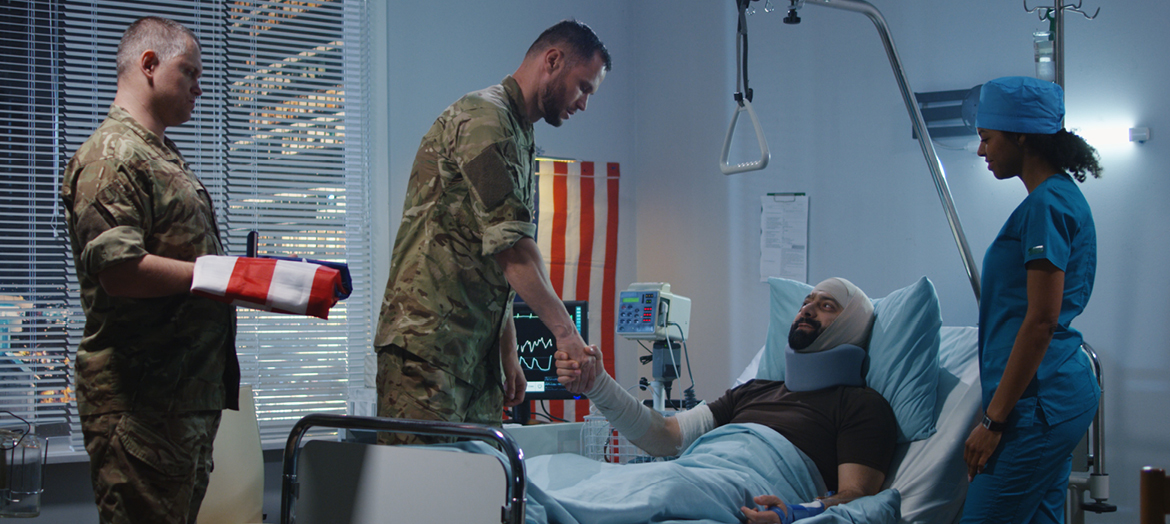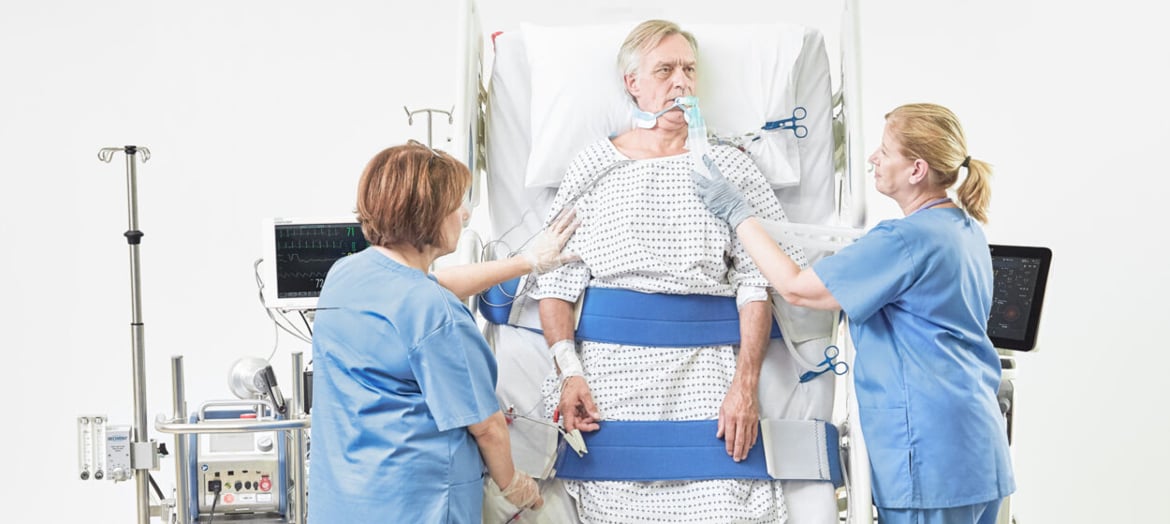The benefits and barriers to Early Mobilization
Early mobilization has been demonstrated to be both safe and feasible for patients admitted to critical care.1

The benefits
When implemented, programs of early mobility have demonstrated numerous benefits to both the patient and the organization. As a result, early mobilization is now included as a key component in a number of national and international guidelines.2,3,4
![]() Patient
Patient
- Reduces the degree of muscle loss and minimizes the poor physical condition associated with prolonged bed rest5,6
- Improved functional status at hospital discharge7,8
- Improved walking ability at discharge6
- Improved health related quality of life6
- Reduced incidence and duration of delirium7,8
Organization![]()
Cost reductions associated with:
- Reduces the degree of muscle loss and minimizes the poor physical condition associated with prolonged bed rest5,6
- Improved functional status at hospital discharge7,8
- Improved walking ability at discharge6
- Improved health related quality of life6
- Reduced incidence and duration of delirium7,8
The barriers
Despite the increasing evidence base to support programs of early mobilization, along with clinical consensus guidelines to guide initiation, the levels of rehabilitation within critical care remain low. A number of point prevalence surveys have demonstrated low levels of rehabilitation within critical care, particularly while patients were receiving mechanical ventilation. A 3 day point prevalence survey of 38 ICUs in Australia and New Zealand found no patients requiring mechanical ventilation sitting out of bed or walking on the days in question.12 This was also the case in a similar study to assess mobility levels in German ICU’s which found only 4% of mechanically ventilated patients in ICU standing or walking.13 As a result, an increasing focus has been placed on identifying barriers to the initiation and delivery of rehabilitation, finding while barriers were multifactorial, important common themes were identified.14
![]() Patient factors
Patient factors
- Delirium
- Anxiety
- Comorbidities
- Weakness
- Confidenece
- Motivation
Safety![]()
- Physiological stability
- Multiple attachments
- Staffing
- Lack of equipment
- Risk of caregiver injury
Unit culture and environment![]()
- Lack of leadership
- Communication
- Competing priorities
- Expertise
- Clinician buy in
- Sedation practice
To successfully implement programs of early mobilization, significant culture change is required and relies on involvement from all members of the multidisciplinary team.
Having access to the right tools, training and processes is key.
Download your free copy of Arjo’s “ICU Early Mobility Solutions” Clinical Evidence Summary
This whitepaper covers:
- The impact of prolonged immobility & key body systems affected by immobility
- The benefits & barriers to early mobilization
- In-bed & out-of-bed mobilization methods supporting rehabilitation and recovery
Meet with Our Experts
Embracing early mobility as a fundamental pillar of rehabilitation for US veterans is an opportunity to optimize their recovery journey and enhance their overall well-being. To benefit from our Early Mobility Solution and provide the best care for our veterans, book a demonstration of our Early Mobility solutions with our experts. We look forward to assisting you in providing exceptional care to our esteemed veterans.
Experience our products firsthand by booking a demonstration of our Early Mobility Solutions.
References:
- Cooper AB, Thornley KS, Young GB, et al. Sleep in critically ill patients requiring mechanical ventilation Chest. 2000; 117(3):809-18.
- National Institute for Health and Care Excellence [NICE]. (2009) Rehabilitation after critical illness. London: NICE (Nice guideline no 83) 24.
- Baron R, Binder A, Biniek R, et al. Evidence and consensus based guideline for the management of delirium, analgesia, and sedation in intensive care medicine. (DAS- Revised Guideline 2015) - short version. Ger Med Sci. 2015 Nov 12;13:Doc19.
- Devlin JW, YOanna S, Gelinas C, et al. Clinical Practice Guidelines for the Prevention and Management of Pain, Agitation/Sedation, Delirium, Immobility, and Sleep Disruption in Adult Patients in the ICU. Critical care Medicine. 2018; 46(9).
- Chiang LL, Wang LY, Wu CP, et al: Effects of physical training on functional status in patients with prolonged mechanical ventilation. Phys Ther 2006; 86:1271–1281.
- Burtin C, Clerckx B, Robbeets C, et al: Early exercise in critically ill patients enhances short-term functional recovery. Crit Care Med.2 2009; 37:2499–2505.
- Schweickert W, Pohlman MC, Pohlman AS, Nigos C, Pawlik AJ, Esbrook CL, et al.Early physical and occupational therapy in mechanically ventilated, critically illpatients: a randomised controlled trial. Lancet 2009;373:1874–82.13.
- Schaller SJ, Anstey M, Blobner M, et al. Early, goal-directed mobilisation in the surgical intensive care unit: a randomised controlled trial. Lancet 2016;388:1377-88.
- Morris PE, Berry MJ, Files DC, Thompson JC, Hauser J, Flores L, et al. Standardized rehabilitation and hospital length of stay among patients with acute respiratory failure. J Am Med Assoc. 2016;315(24):2694–9.
- Mcwilliams D, Weblin J, Atkins G, et al. Enhancing rehabilitation of mechanically ventilated patients in the intensive care unit: a quality improvement project. J Crit Care. 2015;30(1):13–8.
- Needham D, Korupolu R, Zanni JM, et al. Early physical medicine and rehabilitation for patients with acute respiratory failure: A quality improvement project. Arch Phys Med Rehabil 2010; 91:536-542.
- Berney S, Harold M, Webb S, et al. Intensive care unit mobility practices in Australia and New Zealand: a point prevalence study. Crit Care Resusc. 2013;15(4):260–5.
- Nydahl P, Ruhl AP, Bartoszek G et al. Early mobilization of mechanically ventilated patients: a 1-day point-prevalence study in Germany. Crit Care Med. 2014;42(5):1178–86.
- Parry, S.M., Knight, L.D., Connolly, B. et al. Factors influencing physical activity and rehabilitation in survivors of critical illness: a systematic review of quantitative and qualitative studies. Intensive Care Med. 2017; 43: 53.




